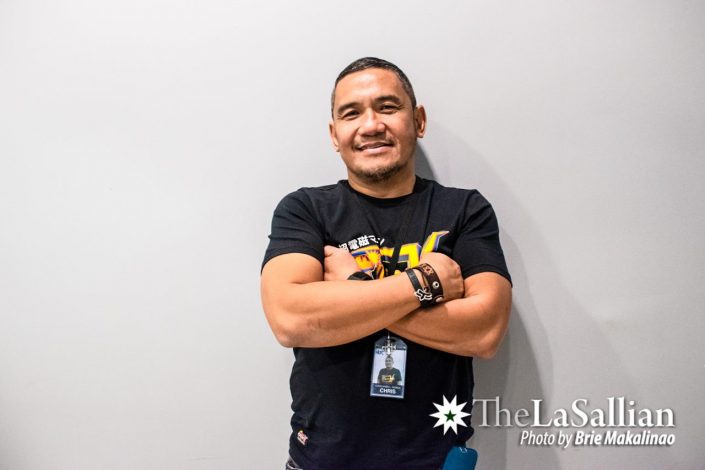The sting of cold water, the ache of long rides, the heat of summer asphalt—this is the world of the triathlete.
Perhaps one of the most punishing race types, the triathlon is comprised of three disciplines: swimming, biking, and running. While requiring a mastery of three sports is already difficult on its own, the distance of a triathlon is perhaps its most challenging part. The entire race can stretch from the manageable “sprint”—a 0.8-kilometer swim, 24.1-kilometer bike ride, and 4.8-kilometer run—to the formidable “Ironman”—3.8-kilometer swim, 180-kilometer bike ride, and 42.2-kilometer marathon.
Conquering a triathlon poses a challenge that appeals to those who participate in these races, and each contestant has their own personal story of how this physically and mentally demanding sport has influenced their lives.
On the road
Triathlons in the Philippines have continued to grow in popularity over the years. The number of contestants for this multi-sport race has dramatically risen since the Olympic Games included it as an official event in 2000—with the largest triathlon competitions in the Philippines now reaching up to 2500 participants.
An immensely dedicated triathlete, Nathaniel Nanglihan shares that he became “hooked” to the sport upon entering the competitive triathlon scene in 2018 because the races offered “whole new challenges [requiring] intense training and fortitude.”
Nanglihan is now no stranger to perseverance and determination, and has been proving his ability to become a consistent and progressive athlete of this sport through persistently joining distinguished triathlon events around the country, including one of the largest local competitions just last June. For him, racing meant “[having] the guts to believe that [one] can face something so arduous.”
The local terrain is another key factor adding to triathlon racing’s appeal in the Philippines. Chris Patricio, an active member of a competitive Philippine triathlon team called Team Prima, speaks highly of the beautiful scenery during his competitions and how the geographical makeup and the diverse Philippine landscapes adds to his personal enjoyment.
“My first ever competition was in Batangas, and the perfect blend of the beach and forestry in the location was jaw-dropping,” Patricio exclaims. The abundance of large natural terrains and bodies of water found in areas like Subic and Cebu create versatile and scenic triathlon routes. Cebu annually hosts the Ironman, the largest triathlon competition in the country, and features a beautiful secluded beach in Shangri-La Hotel Mactan.

The process
It is important to condition one’s body and mind to complete the grueling race that is a triathlon. For Nanglihan and Patricio, training involved a six-month program that had them in the water or on the road nearly every day. Depending on the day, Nanglihan either spent up to one and a half hours in the pool, three hours on slow long distance runs, or six hours on bike rides. Similarly, Patricio trained for different components of the triathlon each day, incorporating all three on Saturdays to simulate the conditions of an actual triathlon.
Both triathletes also had mandatory rest days. “Rest is also very important so that the body can regenerate after the tireless hours of training,” says Patricio.
Participants must also brace themselves for the mental rigors of the race. For this, Nanglihan practiced brick training, where he would bike for an hour and run for 30 minutes after. The workout tackles the difficult transition from cycling to running—a switch that leaves triathletes with a brick-like feeling in their legs. This is a normal but highly uncomfortable feeling, and without training, an amateur triathlete may panic. Mental adjustments like these are why Nanglihan believes preparation is vital.
“When you train yourself physically, then the mental aspect follows too. You [become] more confident of yourself and [are] less prone to panicking because you know that you are ready for the race,” he says. “Pacing yourself is key [not only] during the competition, but in training as well; this is a major mental decision you have to make.”
To stay committed to such a strenuous training schedule, triathletes emphasize dedication. Nanglihan stands by this, “Being a triathlete means dedication: the hours upon hours of training, and strengthening yourself to be the best version that you can be—not just physically, but mentally and spiritually as well.”
Heart and hustle
When asked about the possible misconceptions surrounding the sport, Nanglihan and Patricio both debunked the idea that one must possess a certain body type to participate in a triathlon. “It is still all about the heart and preparation for these competitions rather than the typical physical attributes,” says Patricio.
For Nanglihan, being a triathlete isn’t just about crossing the finish line. “When you finish the race, you feel euphoric. I like the process [of the sport] the most—the daily grind, the discipline required, and the people,” he explains.
This “life-changing journey” is best spent with people—coaches, fellow triathletes, and loved ones—who understand and share a similar passion for the sport. As Nanglihan expresses, “Of course, there’s nothing like seeing my family cheering me on as I cross the finish line, because they are with me every step of the way.”
The triathlon has established a strong influence within Philippine society, and it looks like it is here to stay. It is an unrelenting race that combines perseverance with creativity and beauty, and has people throughout the country hooked and begging for more.
